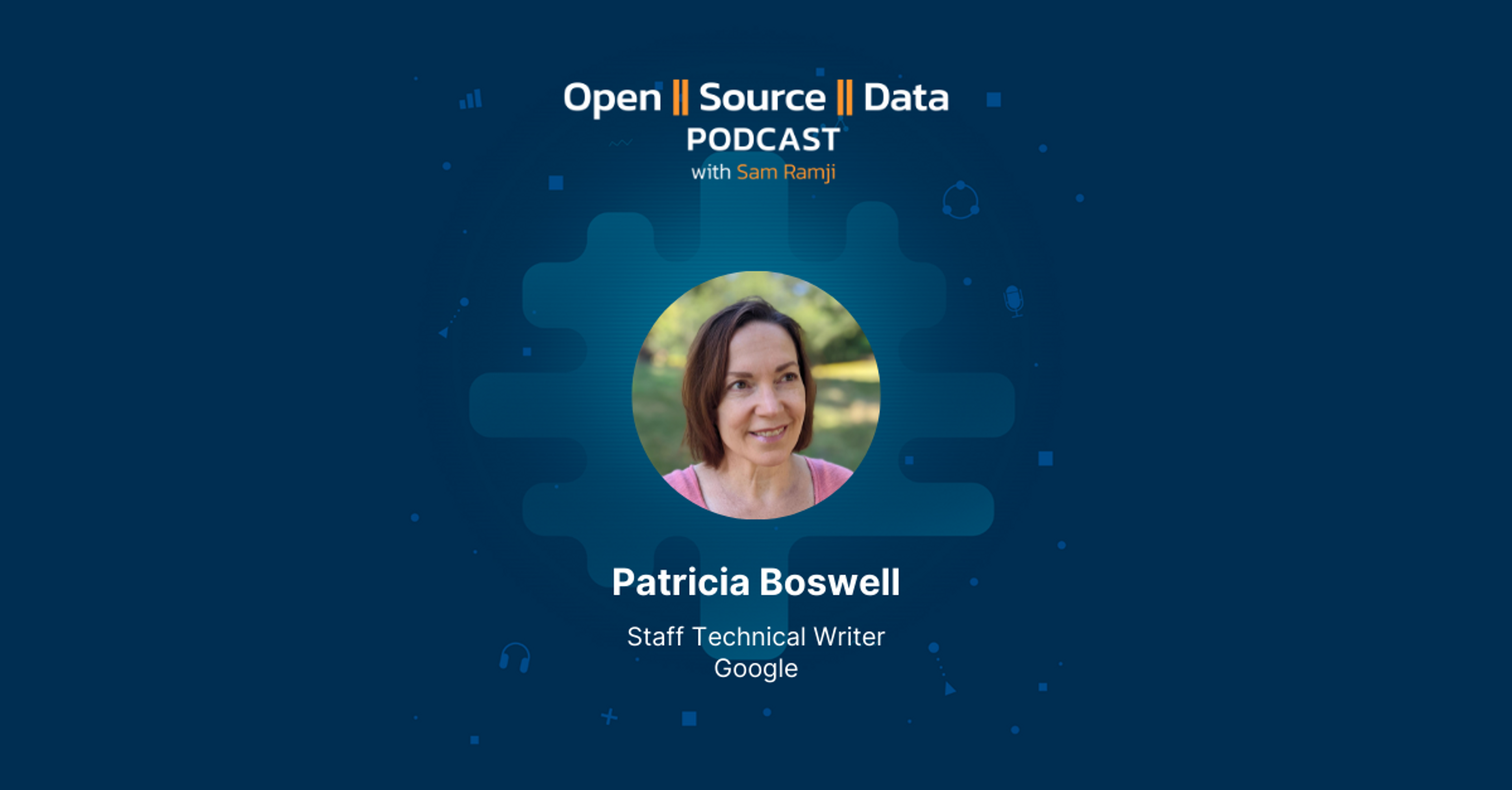Making Storytelling a Part of Your Product Documentation

When I first met Patricia Boswell at Google. I was impressed with her intellectual horsepower and how she coached teams at Google on how to make their technology understandable through storytelling. When we sat down together to record an episode of the Open Source Data podcast, we talked about technology and how storytelling facilitates better communication and collaboration in product development.
Boswell serves as the Staff Technical Writer at Google and has supported content creators across the organization since 2004. The journey that led her to Google started with her study of English literature in college back in the 1980s.
At that time, personal computers and word processors were just hitting the market, and seeing their potential, she became an early adopter of the technology.
My colleagues really thought I was an odd duck. They didn't understand why I would use these computing systems. But now it's all the norm. I think they resisted at first because it was new but then once I got them on board with it they realized the value of it because it gave them a leg up. – Patricia Boswell
As Boswell transitioned into teaching students, she brought her students along, encouraging them to scrap their typewriters and use computers to write their papers. Then she began requiring that students submit their papers to her in email instead of delivering them in hard copy. While using email and attaching files is something most of us take for granted today, at the time, this was an entirely new way to communicate. This also meant that there were few guidelines available for students to teach them how to use email to turn in their assignments. So, Boswell wrote them.
Using her background in English literature, she naturally focused on the benefits and use of every program. Her students didn’t need to know how the code worked, just what they would get out of it.
While Boswell’s journey into tech writing began with email documentation, from Day One, she has always viewed tech writing through the lens of a storyteller. Her first .sig file included the quote from author Leslie Marmon Silko, “You don't have anything if you don't have the story.” And in the tech industry today, this idea serves as a cornerstone for developer relations – It doesn’t matter how you’re building a thing if you can’t tell the users what it will do for them.
Tech writers bring unique expertise to development teams
At Google Cloud, teams usually consist of a product manager, a software engineering lead, a UX lead and a tech writer. This structure provides a solid foundation for collaboration.
In her time with Google, Boswell has worked with many different teams and has enjoyed seeing how her input as a writer has helped to shape product development.
I look for product vision and market vision. I look for that spark. Where do they see this product going? And then I think the collaboration is next, which is, I'm going to push you on that vision. – Patricia Boswell
“I'm going to ask some hard questions about the vision of a product manager. As an experienced tech writer, I know about some of these things. And if they collaborate with me and they're flexible and curious about my point of view, then together we create something that's bigger than either one of us could alone,” Boswell said.
She enjoys asking engineers what they’re doing and seeing their eyes light up as they explain the code. This helps her understand the development and sell others on the idea.
Boswell sees tech writers as non-sales sellers. Describing how it works isn’t enough for her. She wants to find the middle ground that will appeal to developers by bringing out the story behind every product and avoiding all the sales fluff that the marketing department would add.
Thinking about your replacement in development
As our conversation was winding down, we talked about how important it is to think about the person that will be taking over our work some day. Boswell pointed out that when writing product documentation, it’s equally important to write for the stakeholders as well as users. A great product owner will choose the same storytelling approach for both to ensure those that inherit our code can do so more easily to continue its development.
To Boswell humans are story-making machines. People use stories to make meaning and share information. She encourages everyone in tech to make storytelling a part of their skill set because with it, collaboration on any kind of product becomes easier and more productive.
Listen to the full discussion in the episode with Patricia Boswell and meet more inspiring open source data specialists on the Open Source Data podcast.
About Patricia Boswell
Patricia Boswell has been working as Staff Technical Writer at Google since 2004. She helps challenge teams on their products and inspire other content creators to share stories rather than product features. Since completing her PhD in American Literature in 1994, Boswell has worked as both web developer and writer for a variety of organizations, including Keyhole, which was acquired by Google and laid the foundation for Google Earth.
Resources




